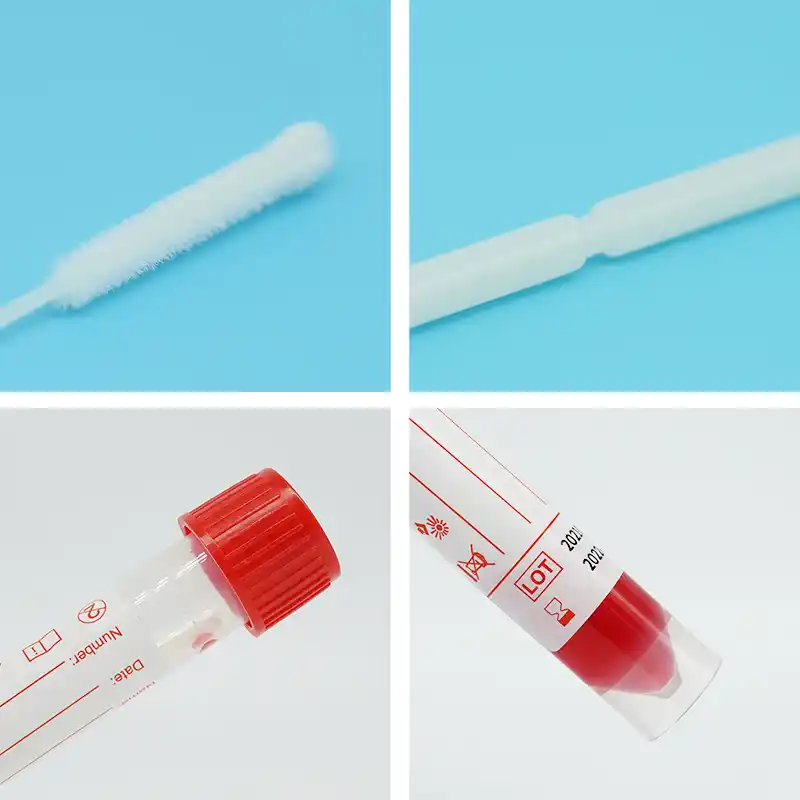What Is V iral Transport Media
What is Viral Transport Media (VTM)?

Viral Transport Media (VTM) is a specialized liquid solution designed to preserve a viral sample (e.g., from a nasopharyngeal swab) during transportation from the collection site to the laboratory for testing.
Its primary purpose is to keep the virus viable and stable, preventing it from degrading so that it can be accurately detected by molecular tests (like PCR) or sometimes viral culture.
Why is it Necessary? The Core Challenges
Without VTM, a collected sample would quickly become useless because:
- Desiccation (Drying Out): The small sample on the swab can dry out, killing the virus and destroying its genetic material (RNA/DNA).
- Temperature Sensitivity: Viruses are fragile and can be destroyed by temperature fluctuations during transport.
- Microbial Growth: Bacteria and fungi from the patient or environment can overgrow the sample, interfering with tests.
- Cellular Degradation: The host cells in the sample (which contain the virus) can break down, releasing enzymes that destroy the virus’s genetic material.
VTM is formulated to counteract all these problems.
Key Components and Their Functions
VTM is a buffered solution containing several key ingredients, each with a specific job:
| Component | Function |
|---|---|
| Buffer (e.g., HEPES, Phosphate) | Maintains a stable pH (usually neutral ~7.0-7.4), which is critical to prevent the sample from becoming acidic or basic, which would inactivate the virus. |
| Protein Stabilizer (e.g., Albumin, Gelatin) | Mimics the protein environment of the human body. It coats the virus and cells, preventing them from sticking to the tube or swab and protecting them from thermal shock and degradation. |
| Antimicrobial Agents (e.g., Antibiotics, Antimycotics) | Prevents the overgrowth of bacteria and fungi that may be present in the sample. This is crucial to ensure the lab is testing for the target virus, not contaminating microbes. |
| Salts (e.g., Saline) | Provides an isotonic environment (similar to salt concentration in human cells) to prevent cells from rupturing (lysis) due to osmotic pressure. |
Crucial Note for PCR Testing: For modern PCR tests (the standard for COVID-19, flu, RSV, etc.), the goal is to preserve the viral genetic material (RNA/DNA), not the live virus. While VTM still works, Universal Transport Media (UTM) is often preferred as it is specifically optimized to stabilize nucleic acids for PCR.
The Workflow: How VTM is Used
- Collection: A healthcare worker collects a sample from a patient’s nose or throat using a flocked swab (the gold standard for sample collection and release).
- Placement in Vial: The swab tip is immediately placed into a sterile plastic tube (often called a “vial” or “transporter”) that contains 1-3 mL of VTM.
- Breaking the Swab: The swab’s shaft is snapped at a pre-designed “breakpoint,” allowing the tube cap to be sealed tightly with the swab tip submerged in the liquid.
- Transport: The sealed, labeled vial is placed in a biohazard bag and typically transported at a refrigerated temperature (2-8°C) to the lab. For longer transit times, it may be frozen.
- Testing: In the lab, the swab is vortexed (shaken) in the VTM to release the viral particles into the solution. This liquid is then extracted and tested.
Types of Transport Media
- Viral Transport Media (VTM): The traditional type, designed to keep the virus alive for viral culture. It is also effective for PCR.
- Universal Transport Media (UTM): A newer, more common formulation. It is designed to preserve the virus’s nucleic acids (RNA/DNA) for PCR testing and keep the virus viable for culture. It has largely become the standard.
- Molecular Transport Media: Specifically designed only for nucleic acid preservation (PCR tests). It often contains reagents that inactivate the virus upon contact, making the sample safer to handle. This is not suitable for viral culture.
Summary
In essence, Viral Transport Media is a preservation solution that acts as a temporary, life-support system for a fragile viral sample. It ensures that the sample collected from a patient arrives at the laboratory in a state that allows for accurate and reliable diagnostic testing. Its widespread use has been critical to the massive scale of testing seen during the COVID-19 pandemic and for other viral diseases like influenza.
 A professional supplier of swabs
A professional supplier of swabs
